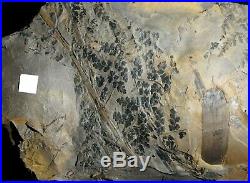
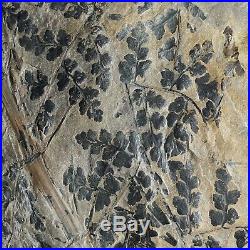
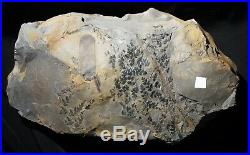
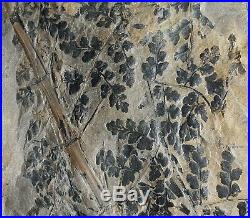
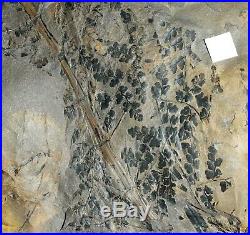
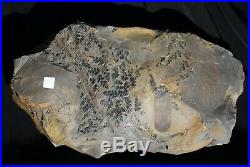


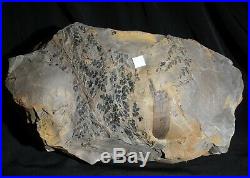
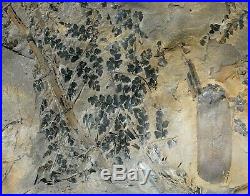


My specimens will be delivered with a “Certificate of authenticity, age and origin” and scientific papers allowing plant identification! Item – Very heavy package up to 4kg. Huge specimen preserved in siderite with rare fossil plants – coal age fern. All detailed data will be provided with the specimen. Stratigraphy: Upper Carboniferous, Middle Pennsylvanian / Westphalian B. 26,5 x 23,0 x 3,5 cm (white square on pictures is 1,0 x 1,0 cm). Huge, museum quality specimen with fossil plant – extinct Spehenophyllum sp. Horsetail and rarer Eusphenopteris like Sphenopteris species. Were group of seed plants from the Carboniferous and Permian periods (about 360 to 250 million years ago). Some, such as Medullosa Lonchopteris, Neuropteris, Alethopteris etc. Grew as upright, unbranched woody trunks topped with a crown of large fernlike fronds. Others, such as Mariopterids, were woody vines. All had fernlike foliage; however, they reproduced by seeds, with ovules and pollen organs attached to the fronds. Gamete – producing structures in the seeds were surrounded by a hard inner integument and a fleshy outer layer. These features have led some authorities to speculate that these seeds may have been dispersed by animals. Some seeds were large. A seed of Medullosa, grew up to 7 cm long. Pollen organs of seed ferns were also large and complex and were commonly made up of many pollen sacs fused into a large structure. Kingdom: Chlorobiota – Plantae. Genus of extinct plants that lived from the end of the Devonian Period to the beginning of the Triassic Period (about 360 to 251 million years ago); it is most commonly reconstructed as a shrub or a creeping vine. Had a strong node-internode architecture, which has led some authorities to ally it with modern horsetails. Branches and leaves were arranged in whorls at each node much like the later Calamites ; however, the leaves of Sphenophyllum were triangular in shape. Spore-bearing cones were also similar to those of Calamites and modern horsetails; however. Lacked the hollow central stem that characterizes horsetail relatives because its tracheids, or water-conducting cells, were arranged in a central triangle surrounded by wood. Sphenophyllum grew in floodplain swamps, away from the margins of rivers. Genus: Sphenophyllum Brongniart 1828. The item “Museum quality huge pre dinosaur fossil plant fern Sphenopteris & Sphenophyllum” is in sale since Tuesday, August 18, 2020. This item is in the category “Collectables\Rocks, Fossils & Minerals\Fossils\Plants”. The seller is “paleobotanica_com” and is located in SOSNOWIEC. This item can be shipped to North, South, or Latin America, all countries in Europe, all countries in continental Asia, Australia.
- Pre dinosaur fossil plant: Carboniferous
- Modified Item: No
- Type: Fossils
- Sub-Type: Plants
